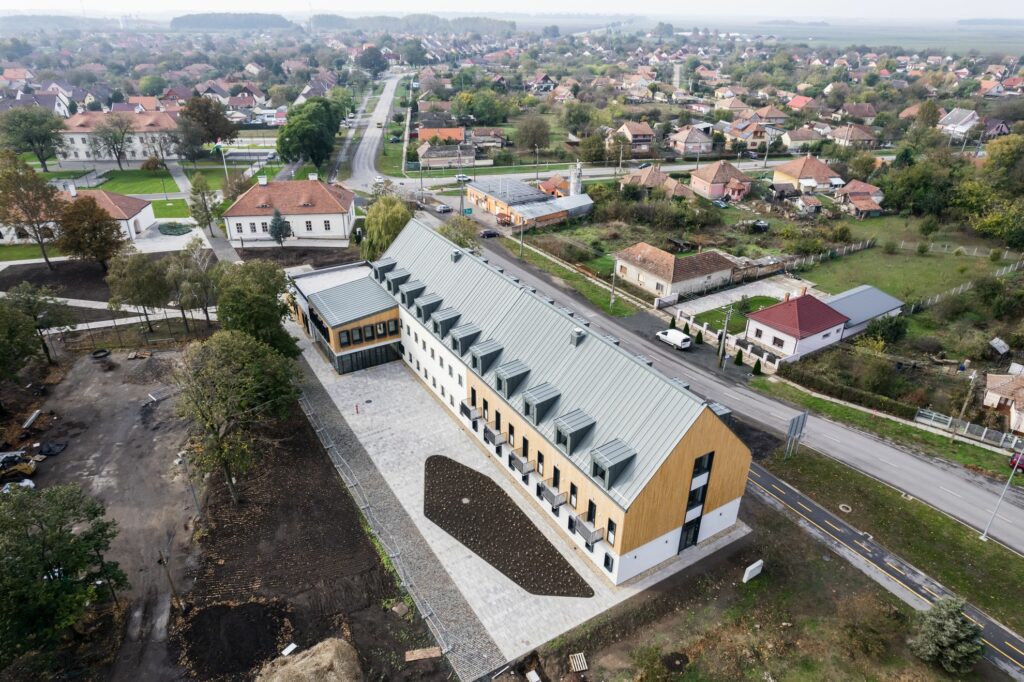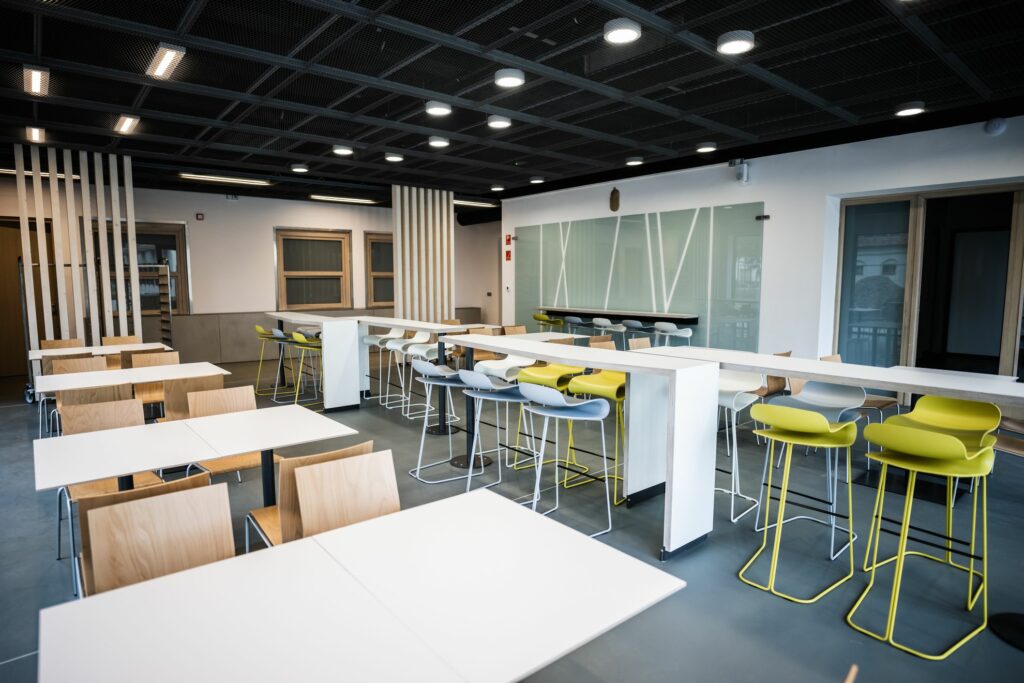At home in school
The school in Mezőhegyes initially provided vocational training for pupils from the local area, and later for pupils from the local area and the surrounding villages. Until 1949, the average number of students per year was between 50 and 70. In 1954 there was a jump in the number of pupils (235). From then on, the number of students increased steadily each year, peaking in the 1968-1969 school year with 809 students. In the socialist era, the number of pupils reached a low of 338 in the school year 1978-1979, and then remained at a low of 340-360 until the change of regime. By the 2006-2007 school year, the number of pupils had increased to 611, but integration efforts and the deterioration of the demographic situation in the region led to a further decline. It reached a new historic low of 178 at the end of the 2014/2015 school year. In 2015, when ranking primary school pupils applying for places 1-3, only 57 pupils applied for the school’s courses, while in 2022, 173 pupils applied for 230 places in the secondary admission procedure. In the 2022/2023 school year, the number of students at the end of the semester was 289 (122 students in college) and at the end of the school year 247 (116 students in college). In the 2023/2024 school year, there are now 308 pupils (145 boarders, 80 girls and 65 boys) and 30 adult education students, which means that the number of pupils has doubled in eight years. The school has active communication, a functioning career strategy and a well thought-out professional development programme. The school’s enrolment area is constantly expanding and widening.
Főiskola külső jövőképterve
With the expansion of the school's enrolment area, it was necessary to accommodate pupils in dormitories.
In the initial period, rural pupils were accommodated in the so-called Greek accommodation on the Battonya road, but there were also pupils living in sublets. As the number of pupils increased, it became necessary to set up a hostel. After the Second World War, the complex of buildings at 23 Kozma Ferenc Street, where the school was located, was converted into a machine station, the L-shaped animal hospital building was converted into a machine shop, another L-shaped flat-roofed social building was erected opposite it, framing the courtyard in mirror-symmetry, and a 60-person workers’ hostel was built. In 1969, the buildings of the machine station were converted into a school and workshops, and the workers’ hostel into a dormitory. The workshop wing of the main building and the other workshops and the dormitory were given a flat roof, and the courtyard was covered with open steel-framed machinery belts. The work was completed in 1970, and the buildings have been used for educational purposes since then. The school was initially designed to accommodate 60 pupils, but after extensions were made it could accommodate between 130 and 140 pupils. The home, and later the dormitory, sought to provide a real home for pupils. They were given all the help they needed to learn, enjoyed colourful leisure activities, and learned the basic rules of coexistence, tolerance of others, tidying up their surroundings and the honour of work. The college is associated with prestigious events, quizzes, lectures, excursions, cycling and walking tours, intimate celebrations, and specialised workshops. Among the latter, the woodcarving course led by József Bulik stands out. The college still preserves and keeps alive several old traditions, such as the “Crow Week”, which helps to welcome and integrate new students.
Accommodation is provided free of charge, including at weekends, with one compulsory return trip per month.
Our boarding students only have to pay for their meals, which currently cost HUF 1,524 gross per day (three meals a day), or HUF 30,480 per month (based on 20 school days). Lunch is provided for boarders at a gross price of HUF 826. We also provide supervision for pupils staying in the dormitory at weekends, but the children have to provide their own meals. There are well-equipped tea kitchens available for this purpose.
Under the legislation in force
meals are free of charge:
– for children in foster care, or pupils in after-school care.
A 50% reduction on the standard rate (reduced-price meals) is granted:
– if the pupil is in receipt of regular child protection benefit;
– if the pupil lives in a family with three or more children;
– if the pupil is permanently ill or disabled.
Where can I apply?
At the institution providing the meals.
How can I apply?
The form “Application form for the reduction of the standard subsistence allowance” must be completed, submitted and the necessary supporting documents must be provided.
For how long is the allowance paid?
It is granted until the end of full-time education.
Under the legislation in force
meals are free of charge:
- for children in foster care
- or pupils in after-school care.
A 50% reduction on the standard rate (reduced-price meals) is granted:
- if the pupil is in receipt of regular child protection benefit;
- if the pupil lives in a family with three or more children;
- if the pupil is permanently ill or disabled.
Where can I apply?
At the institution providing the meals.
How can I apply?
The form “Application form for the reduction of the standard subsistence allowance” must be completed, submitted and the necessary supporting documents must be provided.
For how long is the allowance paid?
It is granted until the end of full-time education.
Who qualifies as a joint household member for child benefit purposes?
Families with three or more children must be considered as living in the same household for the purposes of calculating the benefit:
- children under the age of eighteen,
- a person under the age of 25 who is in full-time education in a public education establishment or a vocational training establishment, in adult education or vocational training organised according to the full-time education timetable, or in full-time education in an institution of higher education, and
- a child, regardless of age, who is permanently ill or seriously disabled, with the exception of children placed temporarily with foster parents, children placed in foster care and young adults in after-care.
Any other questions?
If you have any further questions or need help filling in the form to apply for a reduction in the standard subsistence allowance, please contact the deputy director of the institution.
As of 6 November 2023, a finishing kitchen has started to operate in the new dormitory at the seat of the Institution: a cooking kitchen with limited facilities for the storage and preparation of ingredients, which are provided by another establishment. Catering for children is provided by the Maintainer within the framework of a purchased catering service. The service provider is BEST IRODA Kereskedelmi és Szolgáltató Kft. (registered office: 6720 Szeged, Dózsa utca 3.; company registration number: 06-09-025549; represented by Dr. Gyula Gálosi, Managing Director). The following menu planning guide shows the step-by-step registration and ordering process for the use of the meals.
“Each student has been given a name card to access their room, which must be paged when leaving the building and when returning, so that the tutors can track our whereabouts. The building has also been updated with new dining facilities, which now include a canteen in the dormitory and a choice of menus. Our experience so far has shown us that we can eat much tastier food and pay online more easily. We are very grateful for this new and modern dormitory, we appreciate it and we will take good care of it.” (Etelka Bokor 11A class student)
Since 2015, the number of dormitories has tripled, with 74 dormitories and 94 schools in total. The most distant students come from Transylvania, from Odorheiu Secuiesc and Fenyed.
















The main reason for the improvements was that the college was full. The number of beds has been increased to 150 and each room has its own bathroom (shower, toilet). The three-storey building, with a significantly increased floor area, has modern furnishings and fittings reminiscent of a hotel. The dormitory is equipped with solar panels and is heated and cooled by a ground-source heat pump. In the future, we plan to use it as accommodation for camps and summer internships and as commercial accommodation during weekends and summer holidays. Following the ongoing hotel development, the four-star Hotel Nonius will provide 21st century catering in the dormitory’s kitchen. In addition to the students, the enlarged canteen will also be available for use by the school’s staff, the Stud Farm and the school. The renewed dormitory was reopened on 5 November 2023. The maintenance of the school is also paying special attention to the restoration of the school’s inner park and the construction of public utilities.
During the construction works, the school and the maintenance company provided the necessary dormitory accommodation and childcare in the municipality-owned buildings of the former DÉMÁSZ headquarters at 12 Kozma Ferenc Street and 2 Hild János Street.
“Both the exterior and the interior design faithfully reflect their firm vision of building the school of the future, a school for the future, with full respect for tradition. I am delighted that my son can learn in an institution that is clearly making every effort to provide the highest possible quality education. I am confident that my son will be proud to remember, in a few decades’ time, the years when he was able to study here and see this transformation every day! The direction is clear, as are the goals and the milestones along the way.” (Tamás Faragó parent)
The Mezőhegyes Technical, Vocational School and Dormitory has everything in one place: classrooms for theoretical education, workshops, a dormitory for rural students, a sports hall, a library and a dual training centre - all in a setting that is becoming more beautiful every year, in the heart of a small town with a historic air.
Gábor Tarkó
Head Teacher
Photography and drone photography by Márton Mónus
photographer; visual design by DAW Architecture Studio
Contact
Mezőhegyesi Technical School, Vocational School and College
- 5820 Mezőhegyes, Kozma Ferenc utca 23.

